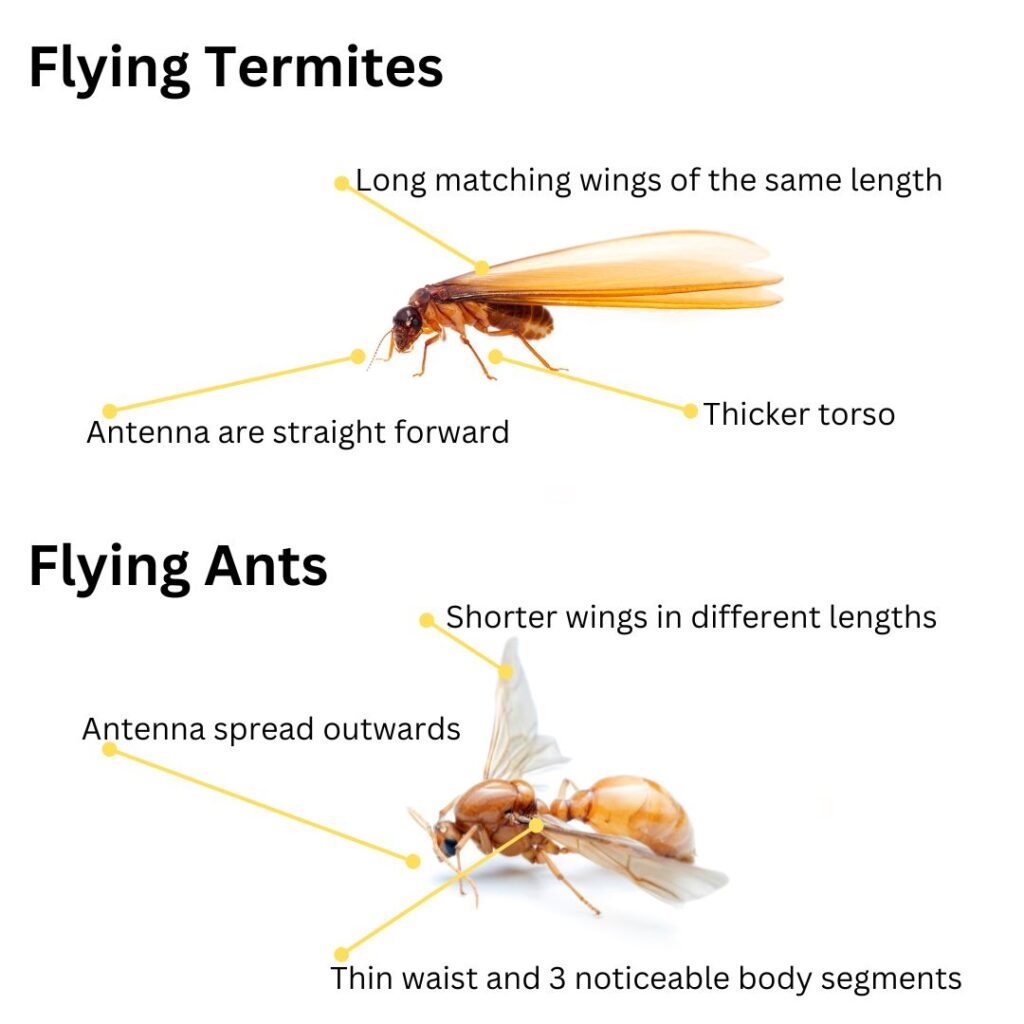Understanding the Lifecycle and Behavior of Flying Termites for Effective Management
Flying termites, commonly referred to as “swarmers,” are most frequently observed during seasonal transitions when humidity levels rise, particularly in spring and early summer. These pests tend to remain hidden during the colder months, quietly consuming wood and expanding their colonies without detection. If you notice these swarmers inside your home, it is likely that termite activity has been ongoing for several months, which could lead to considerable structural damage if not addressed promptly. Gaining insight into their lifecycle and behavior is critical for implementing successful termite management and prevention strategies, ultimately safeguarding your property from potential infestations.
The combination of increased temperatures and subsequent rainfall often triggers massive swarms of termites, sometimes numbering in the tens of thousands. While witnessing such large gatherings of swarmers can be alarming, the likelihood of these termites establishing a new colony in close proximity is relatively low. These swarmers are naturally drawn to light, which accounts for their tendency to cluster around light fixtures in residential areas. Understanding this behavior can help you stay calm while taking necessary precautions to protect your home from potential infestations.
The Hills District, known for its lush bushland, offers an appealing habitat that attracts termites. As you drive along Windsor Road toward Rouse Hill, you can observe numerous termite mounds scattered throughout the median strip, serving as a vivid reminder of the abundant food sources these pests find in the surrounding environment. Homeowners in this area should maintain a vigilant stance, as the proximity to natural habitats significantly raises the risk of termite infestations infiltrating their properties. Awareness of this risk allows for timely preventive measures to be put in place.
Essential Steps to Take When You Spot Flying Termites in Your Home
Stay Calm! It’s possible that your home is not facing an immediate termite threat!
Encountering flying termites should prompt you to take protective actions rather than inciting panic or leading to impulsive purchases of expensive termite control systems. Here are several practical steps you can implement to ensure your home remains safeguarded against these pests:
- Schedule Regular Inspections: If it has been some time since your last professional termite inspection, now is the perfect opportunity to arrange one. Annual inspections conducted by a licensed pest control technician play a vital role in identifying potential termite issues early, ultimately saving you from hefty repair costs down the line.
- Monitor Weather Patterns: Termites tend to swarm on warm, humid nights, making their presence more noticeable during these favorable conditions. By staying aware of the weather, you can better anticipate their activity and take appropriate precautions to protect your home.
- Accurate Identification: Closely observe the swarmers—do their wings appear uniform in size? Are they flying in a specific ‘swarm’ pattern or scattering erratically? Are their antennas straight or bent? Is their body shape consistent, or does it narrow at the waist? Although flying ants and flying termites can look similar, their physical characteristics differ significantly, making accurate identification crucial for effective management and control.

Common Mistakes to Avoid When Dealing with Flying Termites
While it may be tempting to address the issue on your own, certain actions could complicate future treatments and exacerbate the problem:
- Refrain from Spraying: Although spraying swarmers may eliminate visible termites, it does not affect the underlying colony and can impede effective future treatment strategies. It is essential to target the root cause rather than merely treating the symptoms.
- Avoid Sealing Exit Points: If you notice termites emerging from a hole in your walls, refrain from sealing it off. Blocking their exit can force termites to burrow into new areas, potentially causing increased damage to your home.
- Don’t Disturb Mud Trails: If you encounter mud tubes or trails, resist the urge to disturb them. Interfering with these structures can hinder a technician’s assessment and compromise their treatment plan, which may ultimately worsen the situation.
Assessing the Termite Risk in Your Residence
Observing flying termites does not necessarily mean that your home is infested. However, it serves as a valuable reminder to remain proactive in your pest management efforts. Scheduling an annual termite inspection by a qualified professional is your best defense against potential infestations, enabling early detection and timely intervention. While preventive measures might seem like an upfront investment, the expenses associated with extensive termite treatments and necessary repairs can far exceed the cost of regular inspections.
Effective Strategies for Comprehensive Termite Protection in Your Home
Committing to regular annual termite inspections is the foundation of a robust pest control strategy. Additionally, following the recommendations provided by your pest control technician for ongoing prevention can further strengthen your protective measures, including:
- Timely refills of your reticulation system to ensure continuous protection against potential infestations.
- For homes equipped with baiting systems, schedule regular monitoring with your technician to maintain optimal effectiveness and facilitate prompt adjustments as needed.
- If your property lacks a termite barrier, consider investing in one to significantly enhance your defenses against possible infestations.
Taking Prompt Action: The Right Time to Start Your Termite Treatment Journey
There is no wrong time to begin implementing preventive measures; however, it is crucial not to wait until you spot swarmers to take action. When flying termites make an appearance, there may already be hidden damage to your property. Initiating preventive steps now can help safeguard your home year-round, ensuring peace of mind while protecting your valuable investment.
At So Pest Off, we are committed to empowering you with informed, proactive choices regarding termite protection, steering clear of fear-based tactics.
Contact us for reliable inspections and effective, transparent solutions tailored to your specific needs.
The post Flying Termites: Explore This Essential Action Plan appeared first on https://writebuff.com.
The Article Flying Termites: Your Essential Action Plan for Control Was Found On https://limitsofstrategy.com

